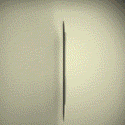
Miller Lite
is calling foul
on Bud Light
after the beer claimed ML
uses corn syrup during four
Super Bowl spots
Not only did Bud Light’s “Bud Knight” have to joust with (spoiler: and die) Game of thrones “The Mountain,” now the beer brand has to tussle with its competitor Miller Lite.
But they started it.
There are is no throne at stake per se. Only corn syrup.
As part of their Super Bowl strategy (Tide did it first, fellas), Bud Light placed an ad in each quarter, featuring its cast of Medieval misfits to start a conversation and point out that Miller Lite uses “corn syrup” as part of their ingredients.
According to AgencySpy, Miller Lite, via AOR DDB Chicago, responded with a full-page ad in The New York Times.
“We want consumers to know the facts about why and how Miller Lite uses corn syrup in the brewing process,” a MillerCoors spokesperson said, explaining the brand chose The New York Times for its reach and the size of its audience. “We want readers to know we are proud of our beers and proud of the ingredients we use in those beers. Corn syrup cleanly and efficiently converts to alcohol during fermentation and has a neutral taste. It isn’t added after brewing nor does it appear in the finished beer.”

ALSO READ: The Best and Worst of Super Bowl LIII commercials
Miller Lite also has realized that the pen (or keypad) is mightier than a Bud Knight’s sword by trolling Bud Light on Twitter:
Bud Light: Miller Lite uses corn syrup!
Dieticians: ?#corntroversy https://t.co/cIJJDZzcfh— Miller Lite (@MillerLite) February 6, 2019
Hey Bud Light, thanks for including us in our first Super Bowl ad in over 20 years. You forgot two things though… we have more taste and half the carbs! #itsmillertime
— Miller Lite (@MillerLite) February 4, 2019
On a Miller Lite Blog, written by MillerCoors Communications Manager Peter Frost, the brand pondered why Bud Light launched the “low-performing” Super Bowl spots:
“Bud Light VP Andy Goeler told Ad Age’s E.J. Schultz Sunday that the brand aimed to bring “ingredient transparency” to the industry and elevate the standards. “As the lead brand in the industry this is something that’s good for beer. It’s good for us, the lead brand, to make a bold move like this.”
What Goeler didn’t tell Schultz was that a number of Anheuser-Busch products also use corn syrup. And on top of that, some of them use high-fructose corn syrup, which nutritionists have called “Public Health Enemy No. 1.” No MillerCoors product uses high-fructose corn syrup.
MillerCoors CEO Gavin Hattersley has his own suspicions on Bud Light’s motive.
“Bud Light is starting this fight for one simple reason. They are scared. Coors Light and Miller Lite are making inroads and Bud Light doesn’t have an answer. We’re getting under the competition’s skin, and we’re ready to take more of their market share too,” he said in a Sunday note to distributors.”
Twitter has also responded to the “brewing” war:
let’s set the record straight:
Bud Light: tastes like piss
Miller Lite: tastes even more like piss (almost as much as Natural light)
Coors Light: tastes like cheap beer, cheap champagne AND piss combined.
Bright side: keep it cheap, people will drink it.
— SeanLyons (@Spechtaculyons) February 6, 2019
Hello, 9-1-1? I’d like to report a slaying, because Miller just killed Bud Light.
— Scott Brown (@scottb804) February 4, 2019
In response to Miller Lite’s full-page ad, a Bud Light launched their own Twitter trolling:
To be clear, Bud Light is not brewed with corn syrup, and Miller Lite and Coors Light are. pic.twitter.com/x6tWqdSRXN
— Bud Light (@budlight) February 3, 2019
Bud Light has also made an enemy of the Corn Farmers. But they’re not showing up with pitchforks. They too are trolling on Twitter:
.@BudLight America’s corn farmers are disappointed in you. Our office is right down the road! We would love to discuss with you the many benefits of corn! Thanks @MillerLight and @CoorsLite for supporting our industry. https://t.co/6fIWtRdeeM
— National Corn (NCGA) (@NationalCorn) February 4, 2019
Who will win this? Not sure. But, Bud Light may need a dragon or frozen zombies to stop Miller Lite and the Corn industry from going all “Killy, Killy” on them.
Source: NY Times










